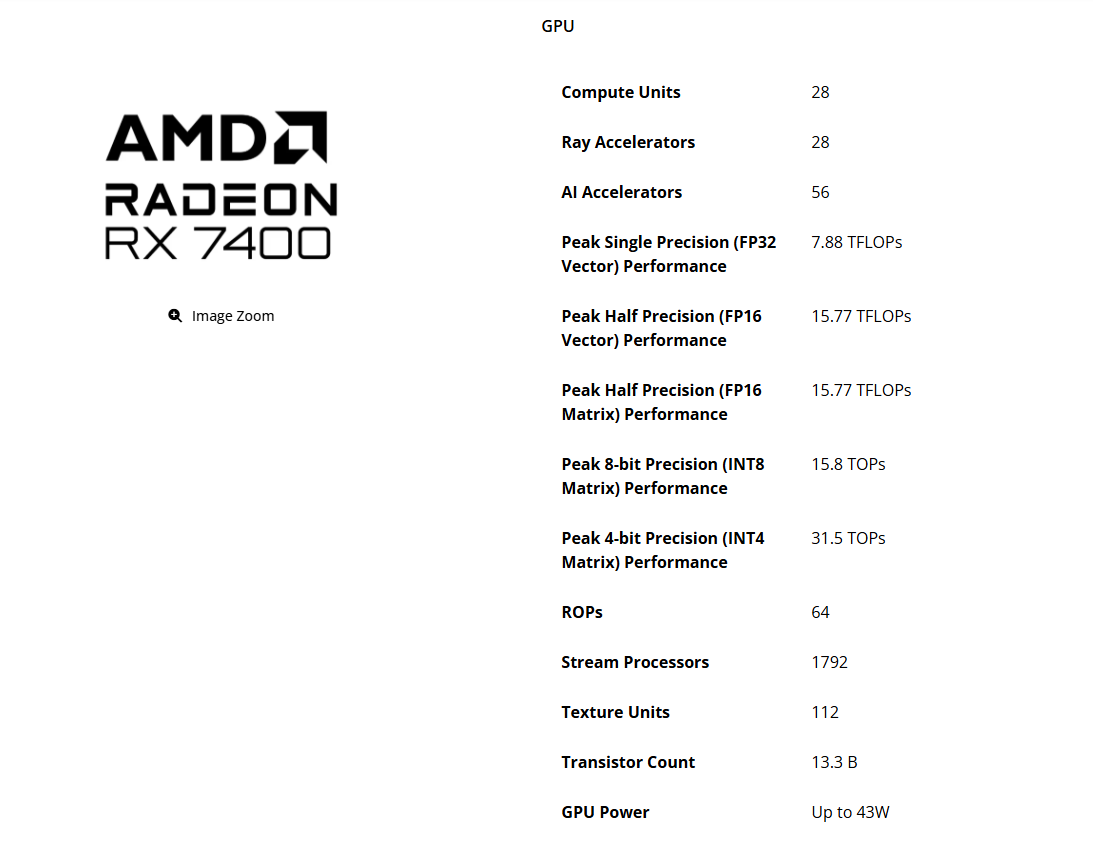AMD Officially Launches Radeon RX 7400: RDNA 3 Gaming GPU With 28 Compute Units, 8 GB GDDR6, and 55W TBP
Following the release of its entry-level Radeon PRO W7400 workstation card, AMD has now introduced the gaming-focused counterpart, the Radeon RX 7400 bringing nearly identical specifications to the table but tuned for consumer gaming workloads.
Much like its PRO workstation sibling, the RX 7400 is built on AMD’s RDNA 3 architecture and is positioned firmly in the budget segment. It features 1792 shaders, 28 Ray Accelerators, and 8 GB of GDDR6 memory running at 10.8 Gbps. This results in 173 GB/s of memory bandwidth, which is about 40% lower than the Radeon RX 7600, despite sharing the same 8 GB / 128-bit configuration. The RX 7400 uses a cut-down version of the NAVI 33 die found in the RX 7600, which helps reduce power draw while keeping costs low.
While the card supports hardware ray tracing, its modest specs mean real-time ray tracing performance will be very limited, especially considering even higher-tier RX 7000 series GPUs struggle with demanding RT-enabled titles. However, as the cheapest RX 7000 GPU to support ray tracing, it does offer an accessible entry point for gamers who want to experiment with RT features in lighter workloads.
Physically, the RX 7400 is a single-slot, 167mm-long GPU identical in form factor to the PRO W7400. It requires no external PCIe power connector thanks to a total board power (TBP) of just 55W, making it ideal for compact and low-power prebuilt systems. This design makes it a strong candidate for small form factor OEM builds, particularly where space and power supply capacity are constrained.
Currently, AMD has not confirmed if the RX 7400 will be offered in the DIY retail market. Given its positioning and specifications, it appears to be primarily aimed at OEM partners, with Dell already deploying the GPU in new entry-level enterprise desktop PCs. Shipments are expected to begin soon.
Do you think AMD’s RX 7400 can carve out a niche as an ultra-efficient entry-level gaming card, or will its low bandwidth and cut-down specs limit its appeal in 2025’s competitive GPU market?


